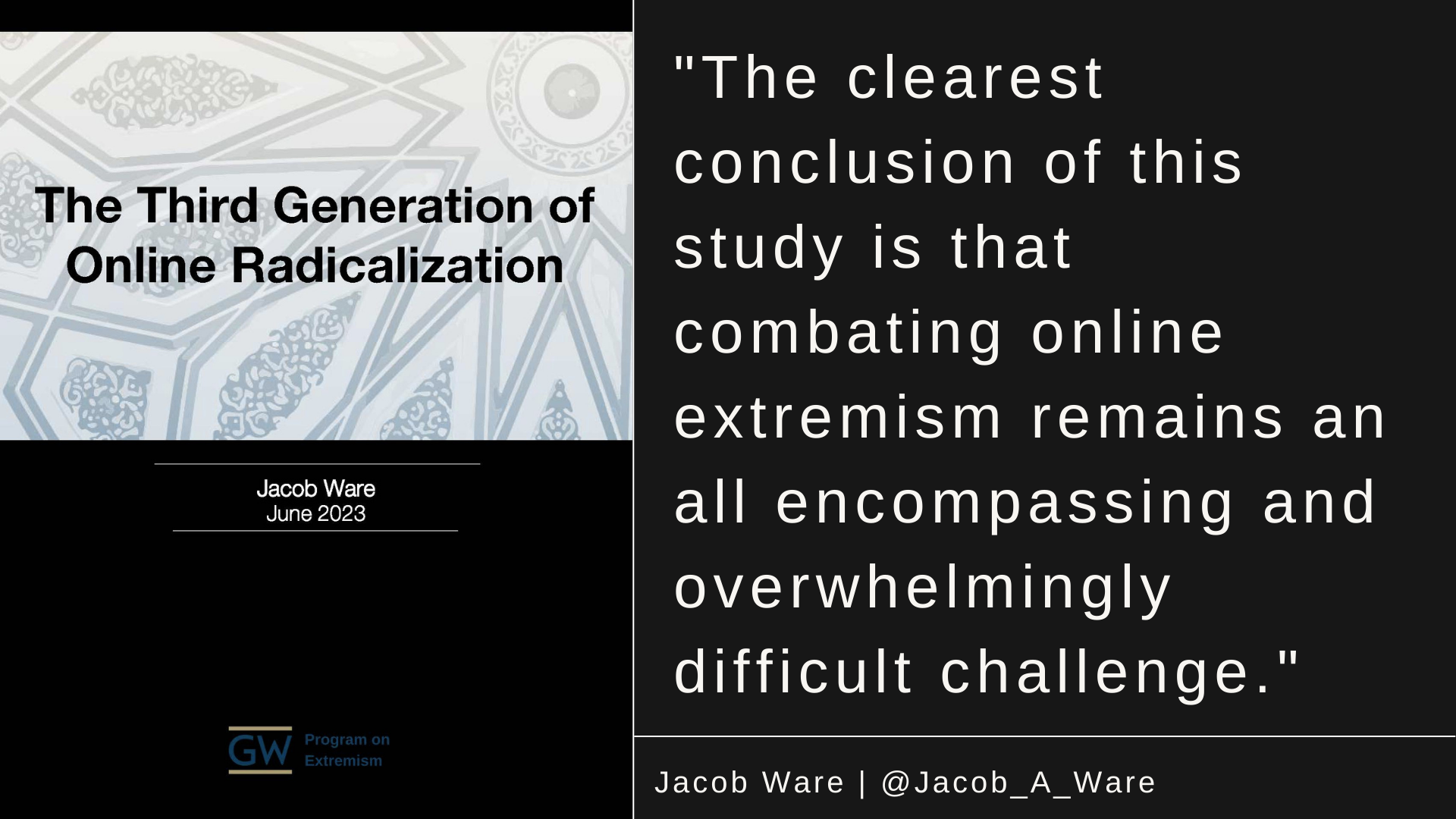When a 13-year-old boy was caught by Estonian police in early 2020 for leading an international terrorist organization, shockwaves rippled through the Western counterterrorism community. But, it was merely the latest uncomfortable milestone in a long-term trend of extremist material growing increasingly accessible online. “Accessing a world of hate online today is as easy as it was tuning into Saturday morning cartoons on television,” Oren Segal of the Anti-Defamation League (ADL) opined, offering a painful comparison illustrating how modern extremism has replaced more benign pastimes. The capture of Feuerkrieg Division’s leader provided perhaps the most shocking—if not outright damning—evidence yet of the ever-increasing impact of social media on the extremism and terrorism stage: individuals in their early teens were not just being recruited by neo-Nazis but were actively recruiting and leading their peers.
In The Diffusion of Military Power, the University of Pennsylvania’s Michael C. Horowitz describes major military innovations (MMIs), defining them as “the introduction and spread of new means of generating military power.” Social media is an MMI for extremists and terrorists, allowing them to reach new constituents and inspire violence oceans away. But this development has not been uniform, nor has it been sudden. Terrorist and extremist use of social media has progressed, and continues to progress, in successive generations, which—like variants of the coronavirus—seem to overtake and eventually dominate the previous strain. They do not start anew; instead, they build upon one another to create a more multifaceted and variegated threat. Understanding these generations and the transitions between them carries important counterterrorism implications by highlighting the critical need to project the next generation and its tools, and work to interdict it before it again inspires new violence.
Although many scholars have tackled the question of online radicalization, far fewer have connected the nuances of the online world to their offline impacts beyond the simple question of whether terrorists inspired online commit violence offline. This article aims to assess how online extremism changes over time, and therefore, how it impacts terrorism and counterterrorism on the ground level. This longer-term and more strategic look at the history of online radicalization is worthwhile in part because it captures the array of research performed over several decades and sorts it into three overarching, chronological categories. Research conducted into key sub-elements such as platforms, groups, networks, moderation evasion, and radicalization patterns informs the framework and helps reveal the characteristics of each generation. The following paper should therefore be understood, in part, as a literature review highlighting important work on key factors in online radicalization. It also reflects the need to constantly reassess our understanding of the latest trends in extremism on the internet. As Meili Criezis writes, “Online environments can be fast-paced; with dynamics constantly shifting and evolving, researchers are required to frequently revisit and reassess these spaces.”
The Estonian teen was young, radicalized on encrypted chatrooms, communicated with like-minded peers oceans away, radicalized others, and was inspired by an esoteric mix of extremist traditions. As we will see, he was firmly a product of the third generation of social media radicalization. But how does his radicalization story differ from his predecessors in the previous two generations? What are the characteristics of each wave, and how do they manifest in real-world violence? How can we prepare for the next developments in online extremism that might signal the arrival of another generational wave? And how can we use those characteristics to stop the next terrorist attack?


